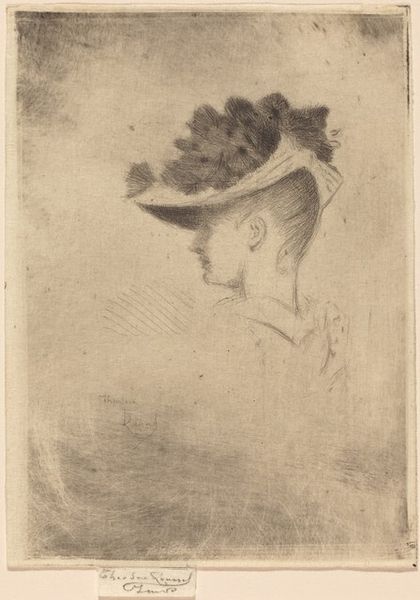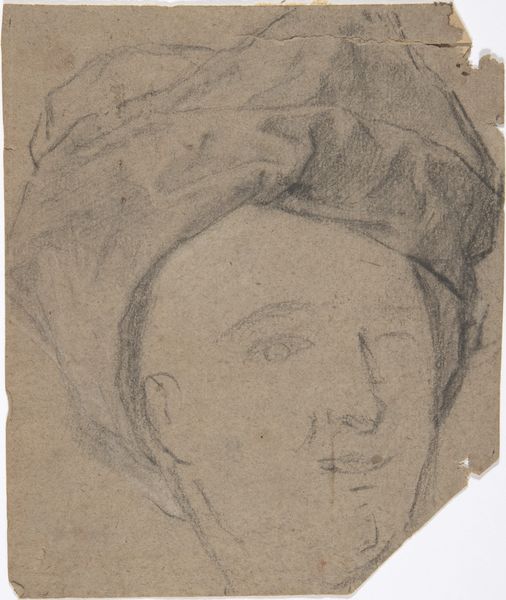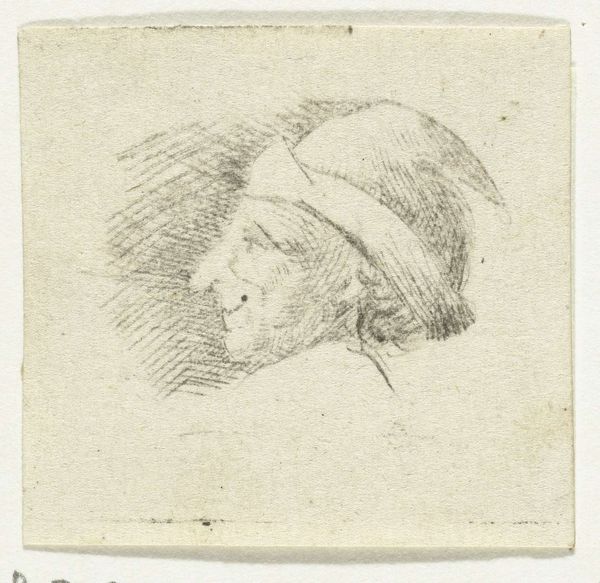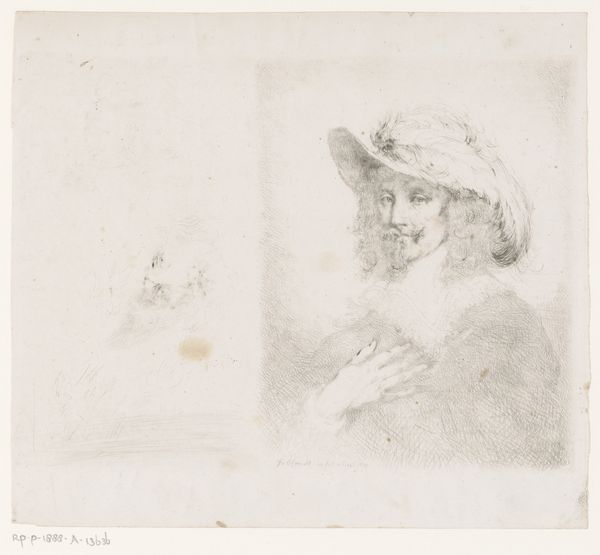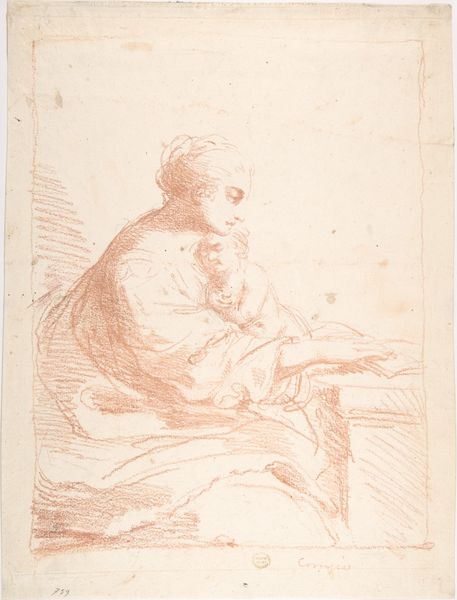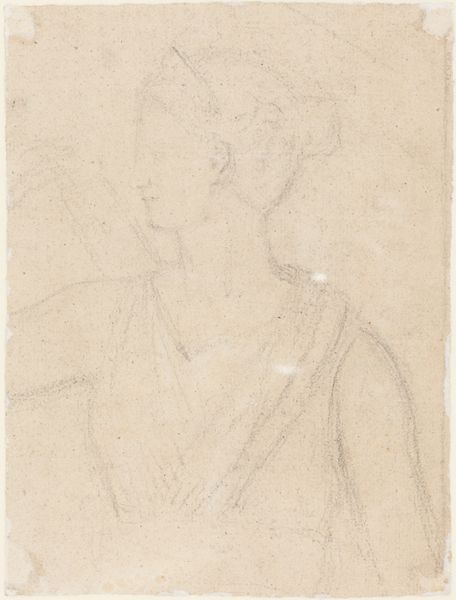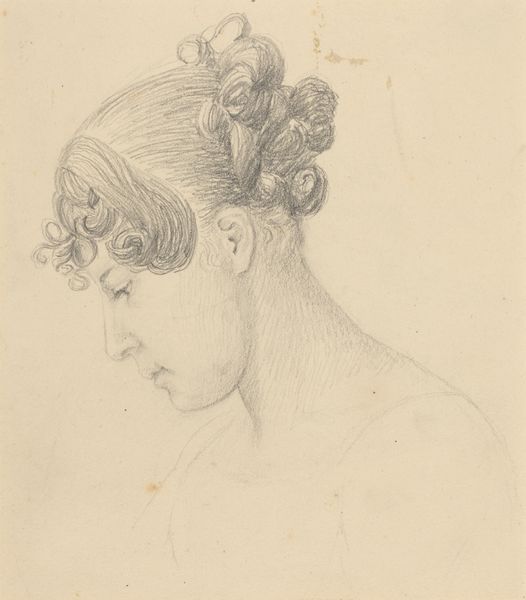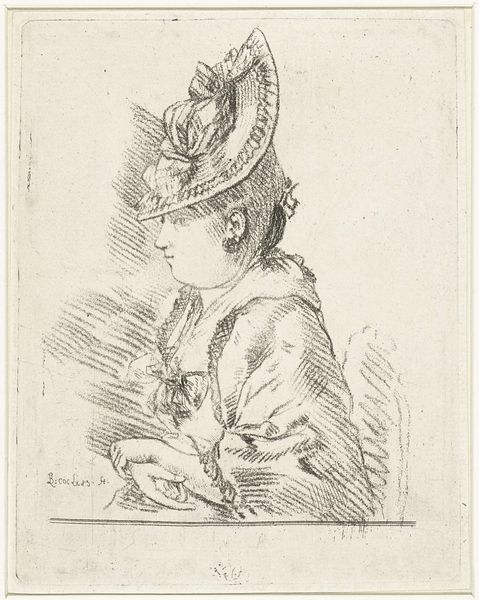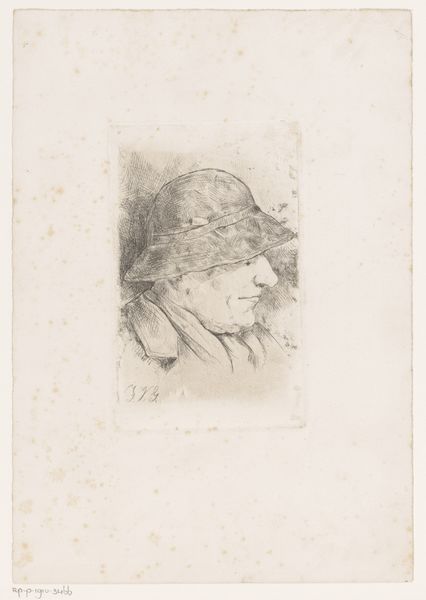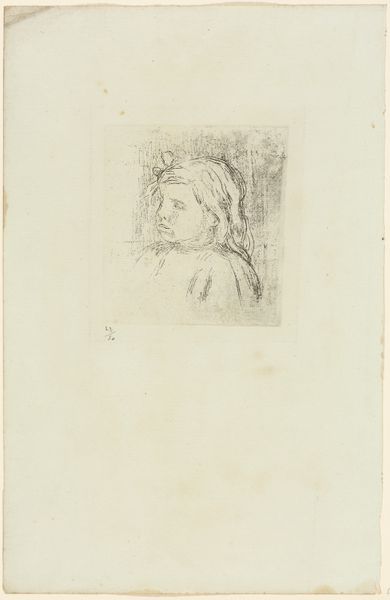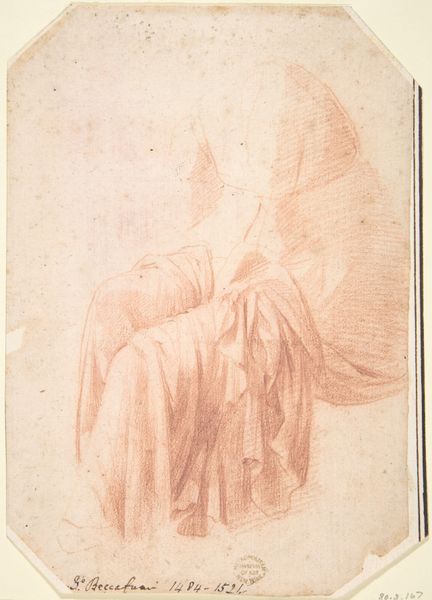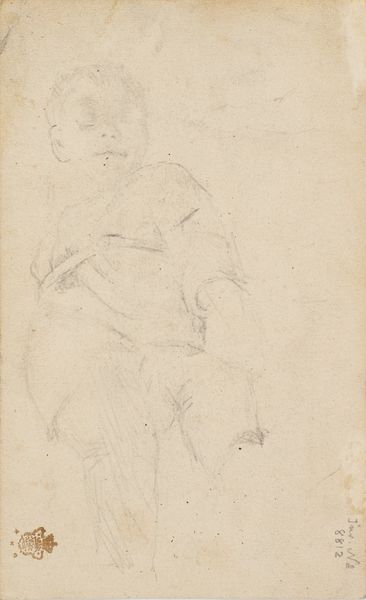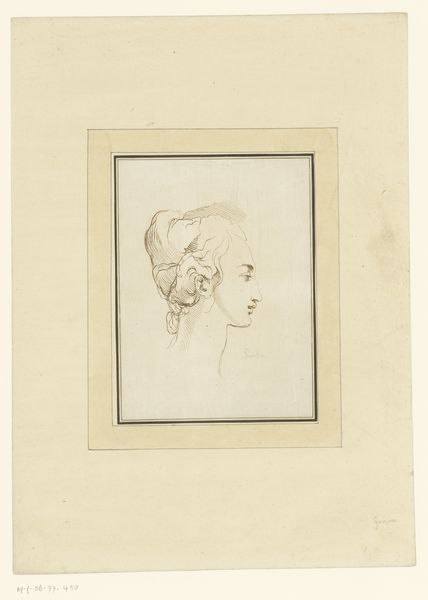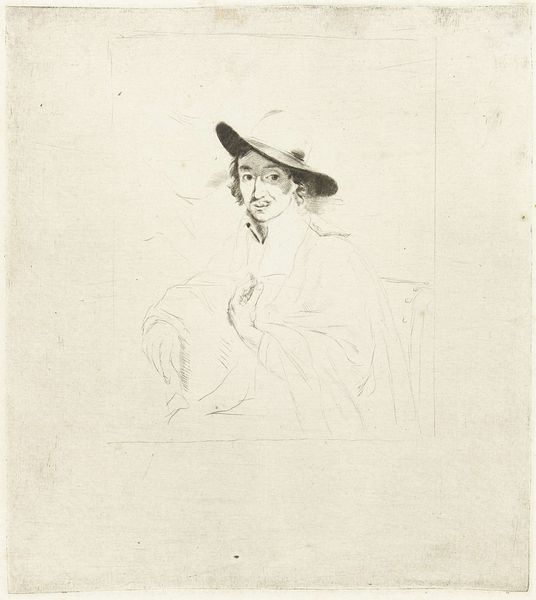
drawing, print, etching, paper
#
portrait
#
drawing
# print
#
impressionism
#
etching
#
paper
Dimensions: 70 × 60 mm (image); 133 × 97 mm (plate); 140 × 97 mm (sheet)
Copyright: Public Domain
Editor: We're looking at "The Henley Hat" by Theodore Roussel, created around 1890. It's an etching printed on paper. The image is mostly lines, so the effect feels delicate, even faded. How do you interpret this work from a purely visual standpoint? Curator: The essence lies within its economy of line, its structured composition of tonal variation, and the subtle textural qualities achieved through the etching process itself. Note how Roussel masterfully articulates form with a minimal vocabulary. How does the absence of color contribute to the reading of the subject? Editor: It feels almost like a fleeting memory, and perhaps forces you to consider the texture more. Curator: Precisely. The print favors suggestion over explicit depiction, nudging us to engage with its formal qualities rather than literal representation. Observe how the diagonal sweep of the hat brim intersects with the profile, creating a dynamic tension within the static form. Editor: I see, so the dynamism isn’t necessarily in the subject matter, but in the construction of shapes. And the varying pressure of the etching creates depth, doesn't it? Curator: Precisely. Note too, the deployment of negative space, especially around the subject's head. It amplifies the sense of lightness. Were the artist to fill in this void, it would upset the subtle balance of the composition, transforming the work into something else entirely. Editor: That's a great point. I was so focused on the subject, I almost missed how strategic the emptiness is. Curator: Understanding how the aesthetic value derives from the visual architecture of a work illuminates aspects we often overlook. Editor: It is as if Roussel constructed the portrait in the viewer’s mind rather than on the paper itself.
Comments
No comments
Be the first to comment and join the conversation on the ultimate creative platform.
